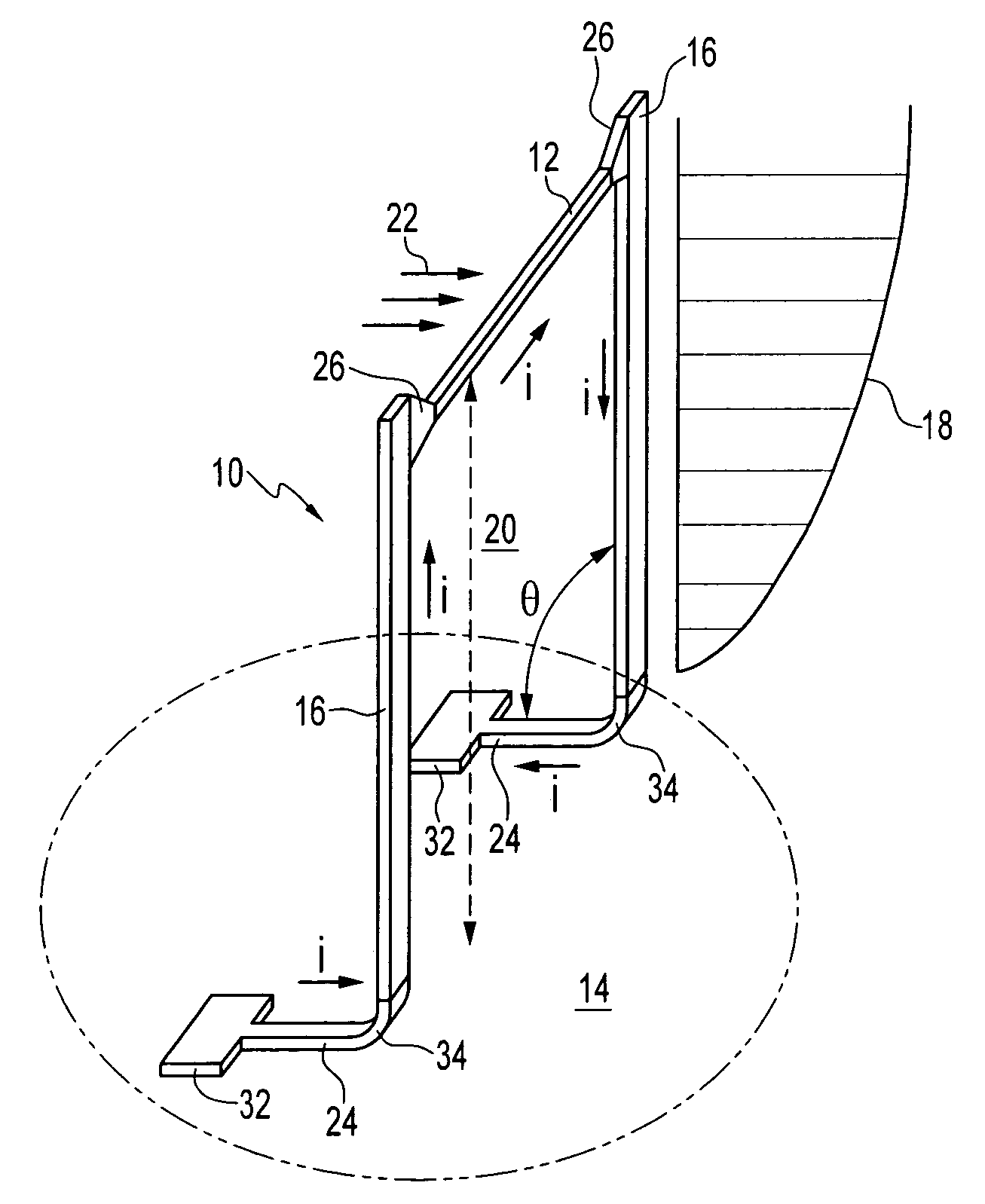Microscale out-of-plane anemometer
a micro-scale, out-of-plane technology, applied in the field of sensing, can solve the problems of uneven performance, delicate fabrication process, and significant shortcomings of conventional hot-wire anemometers
- Summary
- Abstract
- Description
- Claims
- Application Information
AI Technical Summary
Benefits of technology
Problems solved by technology
Method used
Image
Examples
Embodiment Construction
[0024]The present invention provides, among other things, a microscale thermal sensor produced on a substrate by surface micromachining. The thermal sensor provided on a substrate includes a resistive heater, preferably containing a thin film, suspended above the substrate by supports attached at one end to the substrate, either directly or indirectly. The thin film is produced from temperature-sensitive, electrically conductive material. As opposed to conventional microscale anemometers, the present thermal sensor allows non-silicon materials to be used for the resistive heater and / or the substrate. Furthermore, it is preferred that the resistive heater including the thin film be made of a non-silicon material, such as a metal.
[0025]The supports are raised at an angle with respect to the substrate to suspend the resistive heater, preferably creating a clearance underneath the resistive heater for flow of a fluid media. The clearance may be defined, for example, by the resistive hea...
PUM
| Property | Measurement | Unit |
|---|---|---|
| length | aaaaa | aaaaa |
| length | aaaaa | aaaaa |
| temperature | aaaaa | aaaaa |
Abstract
Description
Claims
Application Information
 Login to View More
Login to View More - R&D
- Intellectual Property
- Life Sciences
- Materials
- Tech Scout
- Unparalleled Data Quality
- Higher Quality Content
- 60% Fewer Hallucinations
Browse by: Latest US Patents, China's latest patents, Technical Efficacy Thesaurus, Application Domain, Technology Topic, Popular Technical Reports.
© 2025 PatSnap. All rights reserved.Legal|Privacy policy|Modern Slavery Act Transparency Statement|Sitemap|About US| Contact US: help@patsnap.com



